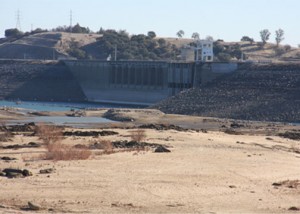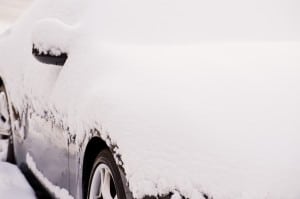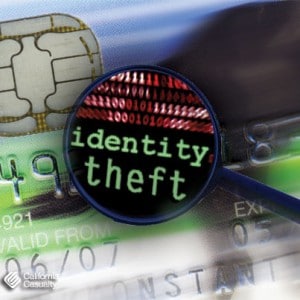by California Casualty | Safety |

It is tinder dry in much of the Western United States – the driest conditions in over 100 years. It is so dire, California Governor Jerry Brown has declared a drought emergency. “These are perhaps the worst drought conditions that California has ever seen, since records (began) about 100 years ago.” Brown emphasized the importance of the inherent danger of the drought by adding, “This is an effort to call for arms. We can take this drought as a stark warning for other things to come.”
It’s not just California. Just this week (January 23) federal officials from the Department of Agriculture designated portions of 11 drought-stricken western and central states as primary natural disaster areas: Colorado, New Mexico, Nevada, Kansas, Texas, Utah, Arkansas, Hawaii, Idaho, Oklahoma and California. Officials warn the dry weather could mean an active fire season, as evidenced by the uncommon early blaze near Los Angeles.
Now is the Time to Protect Your Home from Wildfires
Fire experts say it is essential that property owners create buffer space around their homes and other structures. California Casualty has partnered with the Insurance Institute for Business and Home Safety (IBHS) to provide tips to make your home and property more resistant to wildfires. Ideally, this defensible space should be 30 to 100 feet away from your home.
- Remove leaves and needles from roof, gutters and yard
- Clear yard of any dead vegetation (plants, trees, shrubs)
- Place woodpiles, wooden picnic tables, wooden play structures and any other combustibles at least 30 feet from your home
- Maintain a clearance around your home of at least 30 feet to allow for fire equipment
- Remove any combustible materials from under decks or porches
Don’t be a statistic.
In 2012, nearly 70,000 wildfires burned 9.3 million acres and destroyed more than 2,100 houses in the U.S. Continuing drought conditions – particularly bad in the West – and higher-than-normal predicted spring and summer temperatures are setting the stage for another potentially devastating year of wildfires.
Fire safety and preparation are everybody’s responsibility. California Casualty is in the business of insuring your property, but actions you take now can reduce your risk from wildfires. Here is where you can get your Checklist.
by California Casualty | Safety |
The National Weather Service is describing the ice storm tightening a frozen grip on the southeastern part of the US with words like: Catastrophic, crippling and an even of historical proportions.
Unlike blizzards, ice storms present unique problems that require special preparations.
For your safety, we have excerpted an article from ehow.com on ice storm preparation.
Instructions
Place a winter emergency kit in your car. There are going to be times when a winter ice storm will hit when you are away from the house. Unfortunately, most employers will not let you call out because the weatherman is calling for a winter ice storm. Your winter emergency kit will help you to get home in one piece no matter what you encounter.
Collect all of your flashlights and candles together and make sure that everything is working correctly before the winter ice storm hits. Winter ice storms have been notorious for knocking out power to millions with the weight of the ice on power lines. Do not be left in the dark during the winter ice storm.
Keep your pantry stocked with food that you can eat with out having to cook it. If you lose power during a winter ice storm, you want to make sure that you can still eat. You can also make sure you have all the usual food necessities in case you still have power but are stuck in the house for a few days due to the winter ice storm.
Tips & Warnings
- Try to prepare for a winter ice storm as far in advance as you can. This will keep you home and safe as the storm is on the way.
Read more: ehow.com
Here are some safe driving tips if you encounter ice:
Driving safely on icy roads
- Decrease your speed and leave yourself plenty of room to stop. You should allow at least three times more space than usual between you and the car in front of you.
- Brake gently to avoid skidding. If your wheels start to lock up, ease off the brake.
- Turn on your lights to increase your visibility to other motorists.
- Keep your lights and windshield clean.
- Use low gears to keep traction, especially on hills.
- Don’t use cruise control or overdrive on icy roads.
- Be especially careful on bridges, overpasses and infrequently traveled roads, which will freeze first. Even at temperatures above freezing, if the conditions are wet, you might encounter ice in shady areas or on exposed roadways like bridges.
- Don’t pass snow plows and sanding trucks. The drivers have limited visibility, and you’re likely to find the road in front of them worse than the road behind.
- Don’t assume your vehicle can handle all conditions. Even four-wheel and front-wheel drive vehicles can encounter trouble on winter roads.
If your rear wheels skid…
- Take your foot off the accelerator.
- Steer in the direction you want the front wheels to go. If your rear wheels are sliding left, steer left. If they’re sliding right, steer right.
- If your rear wheels start sliding the other way as you recover, ease the steering wheel toward that side. You might have to steer left and right a few times to get your vehicle completely under control.
- If you have standard brakes, pump them gently.
- If you have anti-lock brakes (ABS), do not pump the brakes. Apply steady pressure to the brakes. You will feel the brakes pulse — this is normal.
If your front wheels skid…
- Take your foot off the gas and shift to neutral, but don’t try to steer immediately.
- As the wheels skid sideways, they will slow the vehicle and traction will return. As it does, steer in the direction you want to go. Then put the transmission in “drive” or release the clutch, and accelerate gently.
by California Casualty | Safety |

As the southeast continues to clean up from this week’s ice and snow storm, what would you do if you were stuck for hours, or days, in a surprise storm? Drivers in Alabama and Georgia faced the dangerous dilemma this week as a surprise storm moved in, stranding people for over 24 hours. Outdoor survival experts and search and rescue groups have put out these life saving tips.
How to Be Prepared:
1. Always drive with at least three-fourths of a tank of gas during the winter months. In an emergency, you will need as much gas as possible.
2. Pack a fleece blanket, emergency food and a first aid kit in the interior of your car. In an emergency the trunk might not be accessible, and fleece is one of the few pieces of material that retains its ability to provide warmth if it gets wet.
3. Have a container in the car that is capable of holding snow. In an emergency it may be necessary to collect snow in order to hydrate.
4. Replace all the interior light bulbs with LED bulbs. LED bulbs use about one-twelfth of the energy of an incandescent bulb and cost less than a tank of gas. In an emergency, conserving the car battery is extremely important, and the LED bulbs make a big difference.
What to Do If You’re Stranded:
1. Don’t panic and don’t rely on your technology. Survival is never about technology and always about temperament. In many cases cell phones and GPS devices may have been disabled by the accident or will not have service. However, if they are functional, they should be used immediately.
2. Always stay in your vehicle. If people are coming to look for you there is a better chance they will see a car than a person. You will also be able to survive for longer in your vehicle than in the elements. There are only two circumstances in which you should leave the vehicle. The first is if you are familiar with the surroundings and are certain it would be easy to walk to safety. The second is an option of last resort in which you believe you have absolutely no chance of surviving unless you try to walk to safety.
3. Keep your seat belt on. In winter conditions it is likely that other drivers may slide into your vehicle after it has become stuck.
4. Crack the back window slightly. Oftentimes the tail pipe is obstructed by snow, which can cause deadly carbon monoxide fumes to get into the vehicle when the engine is running.
5. Run the engine for 10 to 15 minutes every hour. This will allow you to heat the car, melt snow into water and even warm a meal if you have packs of survival food. It will also conserve gas and prolong the life of both the engine and the battery. In an emergency, the vehicle is your lifeboat, and you want it to be functional for as long as possible.
Read more lifesaving winter tips by visiting here.
The Associated Press contributed to this report.
by California Casualty | Safety |

There are many dangers associated with being a law enforcement officer. Many come simply from driving. The police have to protect the public but also protect themselves by not taking risks while in or around their vehicle. Here is a roundup of eight ways for police officers to keep safe on the job.
1. Don’t drive tired: It’s been proven that driving fatigued can be as bad as driving drunk. You’re especially at risk if you work overnight; the darkness can make anyone want to doze. Recognize the warning signs and know when you need to take a break: eyes closing or going out of focus, persistent yawning, irritability and wandering thoughts, among others.
2. Wear a seatbelt: This should go without saying, but it doesn’t. Not only is it a good example for the public, it is a no-brainer for keeping officers safe on the roadways. Sadly, almost half of officers killed in vehicle accidents were not wearing a seatbelt.
3. Use GPS: 911 dispatchers can use GPS to see where officers’ vehicles are at all times. Not only does it allow for the monitoring of safe driving habits, a live map shows the dispatcher which officer is nearest to the scene of an emergency. GPS speeds up the decision-making process, saving what can be critical moments, and the operator can send an officer who can get to the incident the soonest. As always, be sure officers are trained on any new technology in the vehicle, such as GPS-enabled laptops.
4. Avoid multitasking: Police officers today are outfitted with all kinds of equipment in their vehicles, including cameras and computers. Use extreme caution if you have to use this technology while behind the wheel. Eating, drinking or having a conversation while driving can be distracting, too. If it’s not an emergency situation, stop the car and do what you need to do.
5. Wear a reflective vest: Increasing your visibility is a simple but crucial step to take when you exit your vehicle to enter the roadway or stand on the shoulder. If the situation allows, pick these locations wisely — try not to pull over on a blind curve, where other drivers have little or no chance to see you in time to slow down.
6. Keep tires maintained: The vehicle should have a light that warns the driver when tire pressure is low, but it doesn’t hurt to check it once in a while, especially when the temperature drops significantly at the beginning of winter. Check tire treads using the “penny test”: place an upside-down penny in one of the treads. If you can see the top of Lincoln’s head, your treads are wearing down and the tire should be replaced.
7. Don’t speed unless necessary: Speed can kill. The faster a car is moving, the less time the driver has to react to any obstacle. Making sudden maneuvers at high speeds leads to accidents.
8. Call for backup: If you have a feeling that backup is needed, ask for it. Don’t worry about inconveniencing other officers. You are better safe than sorry if you suspect that someone has a gun or that you will be in a threatening situation.
Author Bio:
Cheryl Bikowski is Marketing Communications Supervisor of Gamber-Johnson in Stevens Point, WI. Gamber-Johnson is a leading supplier of vehicle computer mounts and vehicle docking stations and is a member of the Leggett & Platt Commercial Vehicle Products (CVP) Group.
by California Casualty | Safety |

Gov’t: 1 in 14 fell prey to identity theft in 2012(from AP)
WASHINGTON (AP) — The government says 1 out of every 14 Americans age 16 or older was a target or a victim of identity theft, a crime imposing a heavy emotional toll on many of its victims. This comes from a national survey of 70,000 people, issued by the Bureau of Justice Statistics. ID theft resulted in $24.7 billion in financial losses last year. The crime affected 16.6 million people and fell most heavily on households with annual incomes of $75,000 or more. In that income bracket, 10 percent of such households were victimized.
Here are some scary statistics:
- Two-thirds of identity theft victims experienced financial losses, which averaged $1,769.
- 47% of victims who spent six months or more resolving the financial and credit problems, experienced severe emotional distress, compared with 4% who spent a day or less resolving the problems.
- Less than 10% of victims bought identity theft protection.
Theft involving existing credit cards and bank accounts made up for the vast majority of the 16.6 million victims.
Some 7.7 million victims reported the fraudulent use of a credit card, and 7.5 million reported the fraudulent use of a bank account such as a debit card, checking account or savings.
For more information about California Casualty’s FREE Identity Defense protection, visit here.
by California Casualty | Safety |

As Mother Nature’s icy grip takes hold across much of the nation, officials are warning to be very careful and plan ahead. The super-frigid air is more than an inconvenience, it can be life threatening. Here are some tips for people who will be driving in ice and snow storms:
If a blizzard traps you in the car:
- Pull off the highway. Turn on hazard lights and hang a distress flag from the radio antenna or window.
- Remain in your vehicle where rescuers are most likely to find you. Do not set out on foot unless you can see a building close by where you know you can take shelter. Be careful; distances are distorted by blowing snow. A building may seem close, but be too far to walk to in deep snow.
- Run the engine and heater about 10 minutes each hour to keep warm. When the engine is running, open a downwind window slightly for ventilation and periodically clear snow from the exhaust pipe. This will protect you from possible carbon monoxide poisoning.
- Exercise to maintain body heat, but avoid overexertion. In extreme cold, use road maps, seat covers, and floor mats for insulation. Huddle with passengers and use your coat for a blanket.
- Take turns sleeping. One person should be awake at all times to look for rescue crews.
- Eat regularly and drink ample fluids to avoid dehydration, but avoid caffeine and alcohol.
- Be careful not to waste battery power. Balance electrical energy needs – the use of lights, heat, and radio – with supply.
- Turn on the inside light at night so work crews or rescuers can see you.
- If stranded in a remote area, stomp large block letters in an open area spelling out HELP or SOS and line with rocks or tree limbs to attract the attention of rescue personnel who may be surveying the area by airplane.
- Leave the car and proceed on foot – if necessary – once the blizzard passes.
FEMA also has numerous other tips about cold weather safety here.





